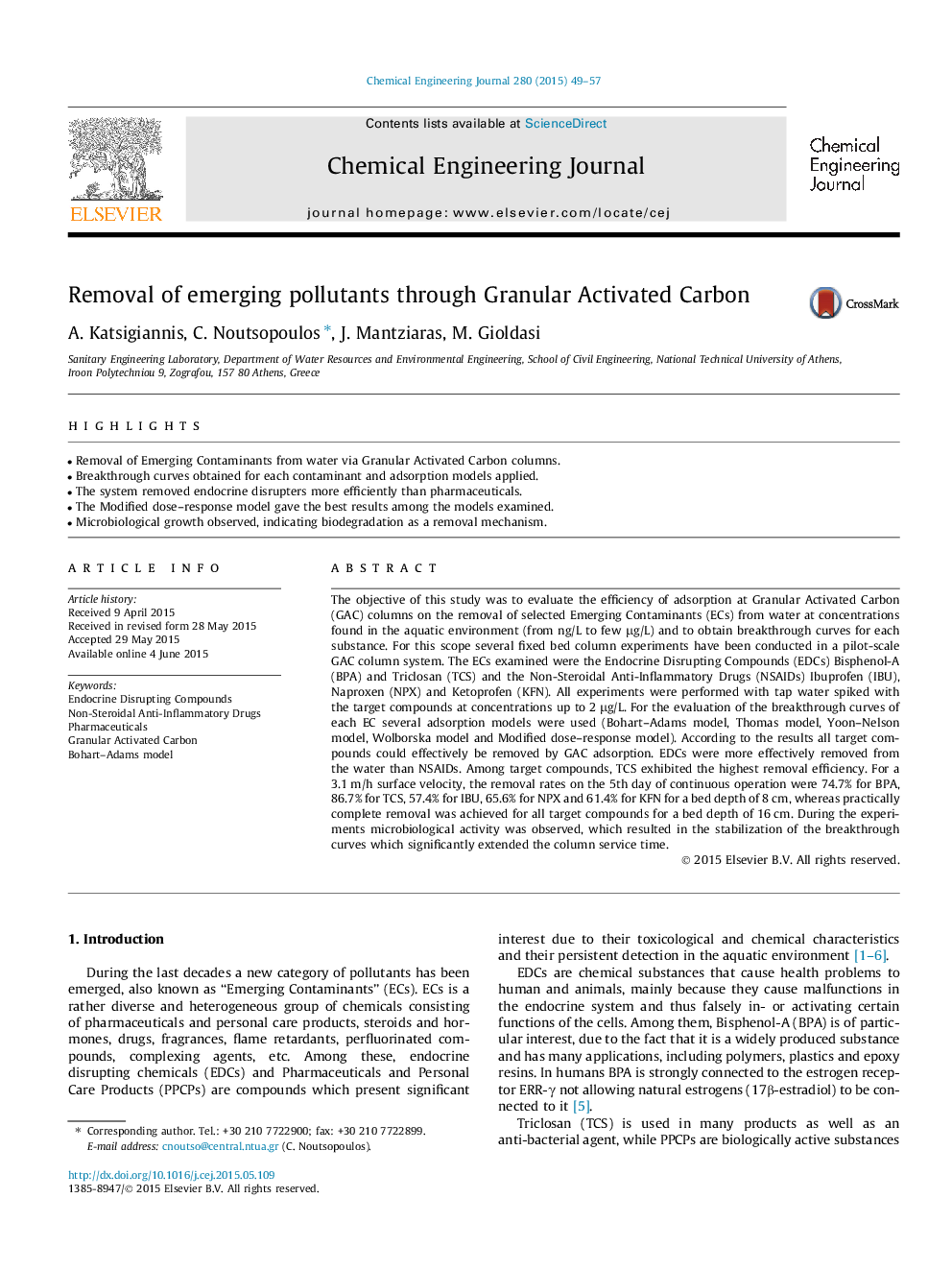| کد مقاله | کد نشریه | سال انتشار | مقاله انگلیسی | نسخه تمام متن |
|---|---|---|---|---|
| 6584157 | 456358 | 2015 | 9 صفحه PDF | دانلود رایگان |
عنوان انگلیسی مقاله ISI
Removal of emerging pollutants through Granular Activated Carbon
ترجمه فارسی عنوان
حذف آلاینده های در حال ظهور از طریق کربن فعال گرانول
دانلود مقاله + سفارش ترجمه
دانلود مقاله ISI انگلیسی
رایگان برای ایرانیان
کلمات کلیدی
موضوعات مرتبط
مهندسی و علوم پایه
مهندسی شیمی
مهندسی شیمی (عمومی)
چکیده انگلیسی
The objective of this study was to evaluate the efficiency of adsorption at Granular Activated Carbon (GAC) columns on the removal of selected Emerging Contaminants (ECs) from water at concentrations found in the aquatic environment (from ng/L to few μg/L) and to obtain breakthrough curves for each substance. For this scope several fixed bed column experiments have been conducted in a pilot-scale GAC column system. The ECs examined were the Endocrine Disrupting Compounds (EDCs) Bisphenol-A (BPA) and Triclosan (TCS) and the Non-Steroidal Anti-Inflammatory Drugs (NSAIDs) Ibuprofen (IBU), Naproxen (NPX) and Ketoprofen (KFN). All experiments were performed with tap water spiked with the target compounds at concentrations up to 2 μg/L. For the evaluation of the breakthrough curves of each EC several adsorption models were used (Bohart-Adams model, Thomas model, Yoon-Nelson model, Wolborska model and Modified dose-response model). According to the results all target compounds could effectively be removed by GAC adsorption. EDCs were more effectively removed from the water than NSAIDs. Among target compounds, TCS exhibited the highest removal efficiency. For a 3.1 m/h surface velocity, the removal rates on the 5th day of continuous operation were 74.7% for BPA, 86.7% for TCS, 57.4% for IBU, 65.6% for NPX and 61.4% for KFN for a bed depth of 8 cm, whereas practically complete removal was achieved for all target compounds for a bed depth of 16 cm. During the experiments microbiological activity was observed, which resulted in the stabilization of the breakthrough curves which significantly extended the column service time.
ناشر
Database: Elsevier - ScienceDirect (ساینس دایرکت)
Journal: Chemical Engineering Journal - Volume 280, 15 November 2015, Pages 49-57
Journal: Chemical Engineering Journal - Volume 280, 15 November 2015, Pages 49-57
نویسندگان
A. Katsigiannis, C. Noutsopoulos, J. Mantziaras, M. Gioldasi,
